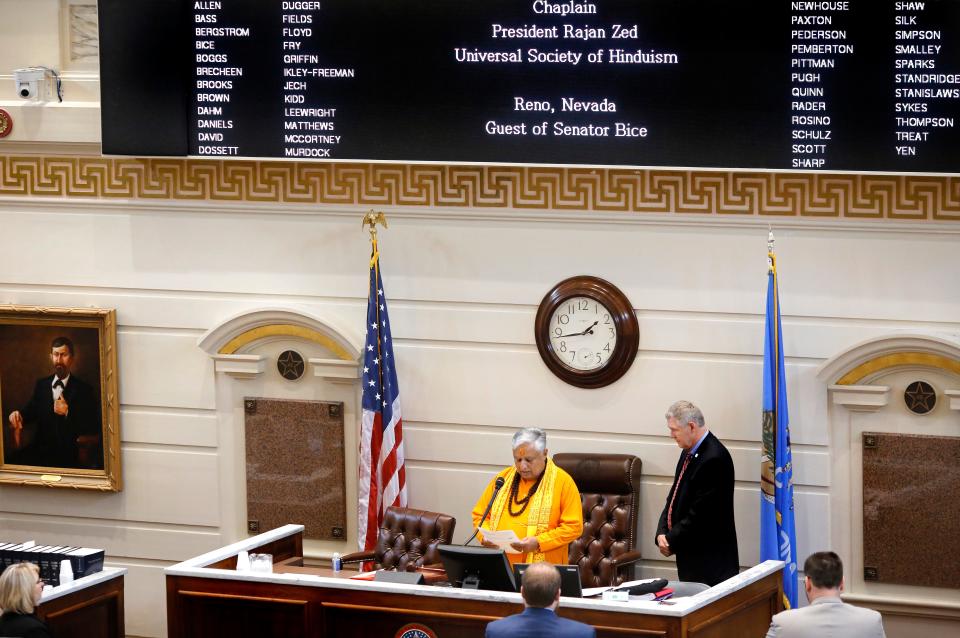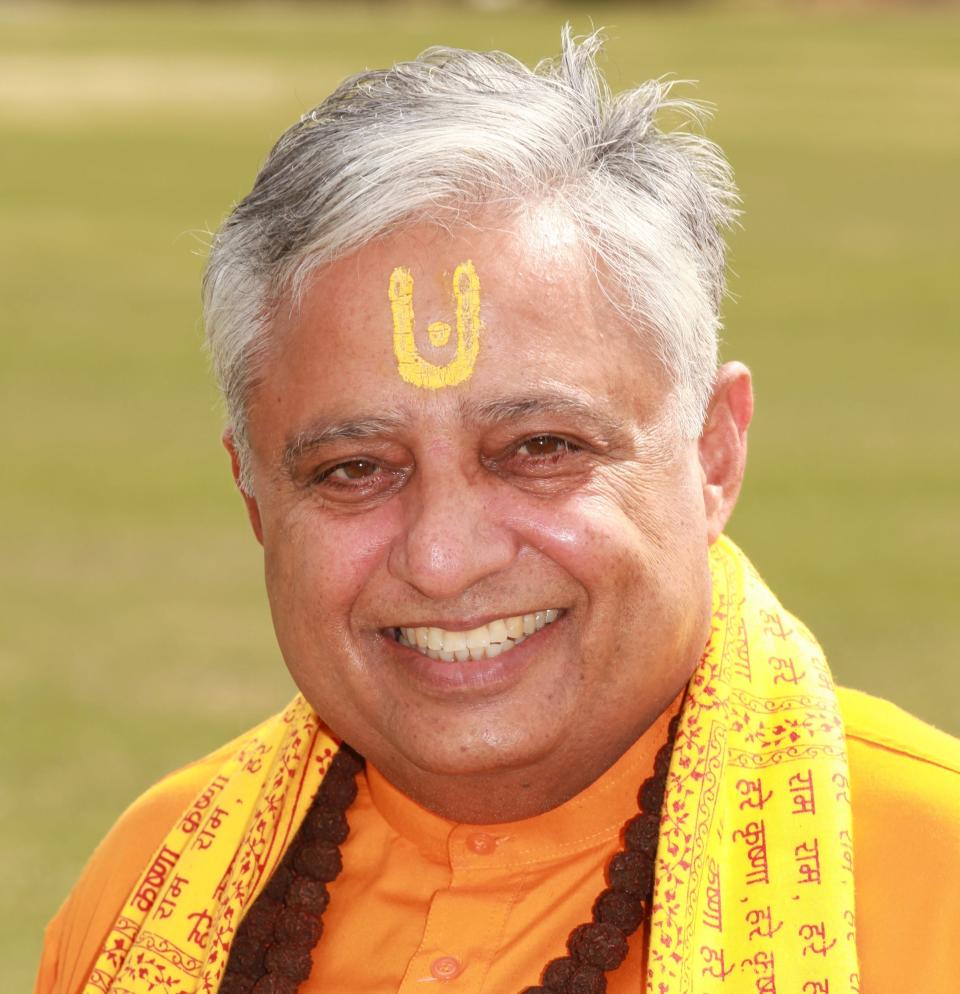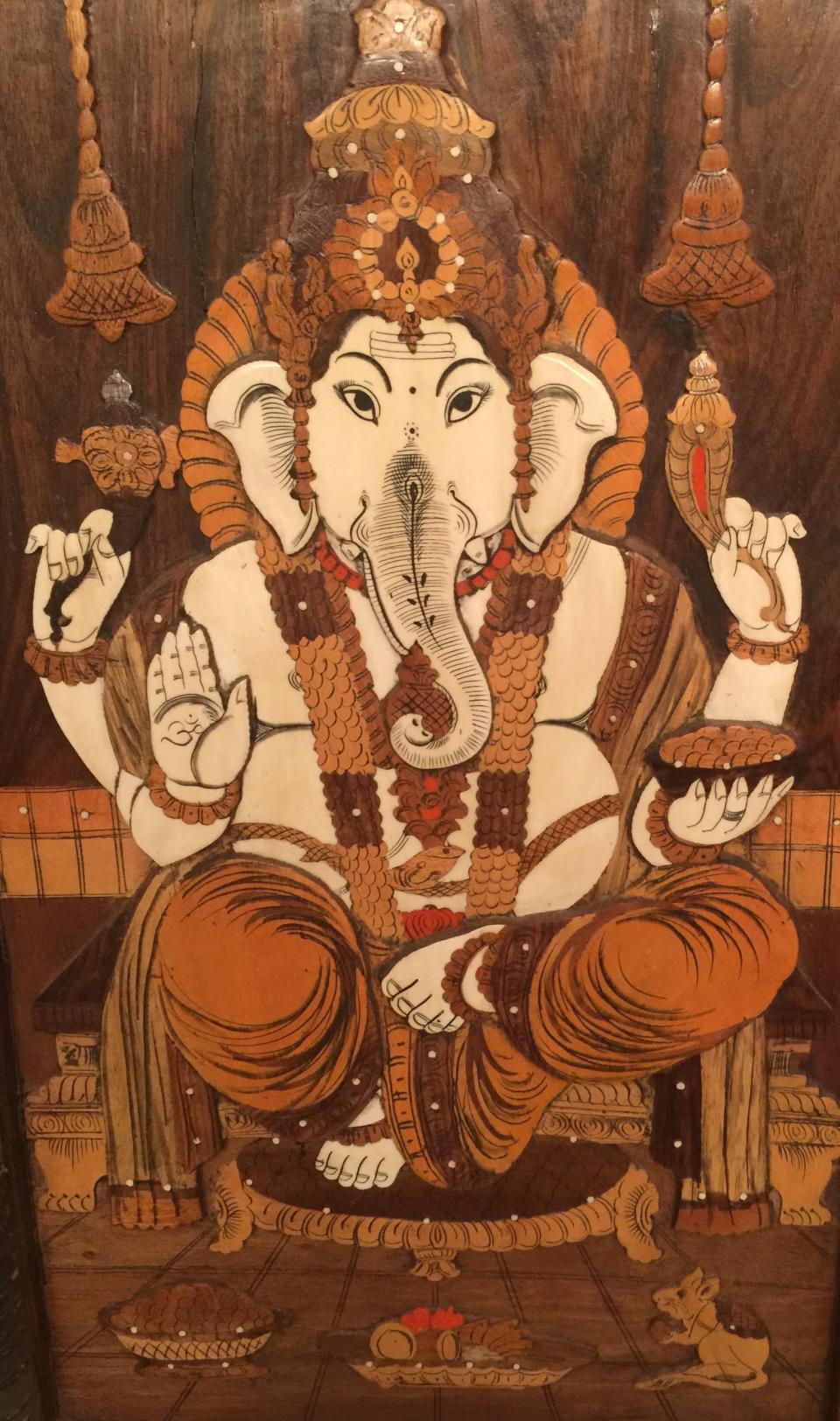Nativity scene may make room for Hindu deity display at Oklahoma state Capitol
A Nevada-based Hindu organization is planning to place a display of Hindu deities at the state Capitol after a Christian group recently was allowed to put a Nativity scene in the government building.
Wednesday, Rajan Zed, president of the Universal Society of Hinduism, said he hopes to have 10-foot-tall monument showcasing various Hindu deities such as Lord Ganesha, Vishnu, Krishna, Rama or Lakshmi displayed at the state Capitol during the Hindu holiday of Diwali in October 2022.

"We would invite Oklahoma Governor J. Kevin Stitt and First Lady Sarah Stitt to inaugurate this proposed Diwali display by lighting a traditional lamp," Zed said in a statement.
Room on the rotunda?: Group places Nativity scene at Oklahoma State Capitol for Christmas
"We are thinking of a 10-feet-tall display monument and plan to sanctify it by chanting of mantras, some as old as 1,500 BCE; sprinkling of holy water from river Ganga in India; ringing of ghanta (big metallic bell); and other ancient rituals. It would be a nice blessing for the state."

Zed said he welcomed the idea of a Nativity scene being placed at the Capitol because it should open the door for other faith groups to place their own displays there.
A Nativity scene sponsored by the American Nativity Scene and the Thomas More Society, a pro-bono law firm, was placed on the second-floor rotunda at the Capitol on Monday. Organizers said the privately funded display depicting the birth of Jesus Christ, as chronicled in the Bible, was placed in the government building to proclaim that Christ's birth into the world is the spiritual message of Christmas and to help stem the tide of secularism. The religious symbols were to be displayed at the Capitol through Wednesday.
"Hindus welcomed the idea of demonstration of religion at public places as long as it permitted the exhibits of diverse religions and denominations practiced in Oklahoma and the nation and the expression of non-believers," Zed said.

Zed said the proposed Diwali monument would be a privately funded project, financed and built by the Hindu community, with no government money.
"By honoring the Hindus living in Oklahoma, this Diwali display would raise awareness of Oklahomans about Hinduism, oldest and third-largest religion of the world with about 1.2 billion adherents and a rich philosophical thought," he said.
The Hindu statesman is no stranger to Oklahoma. In 2018, he visited the state to give the invocation to open a session of the Senate, making history by delivering the first Hindu prayer ever given before the body of Oklahoma lawmakers.
At the time, Zed was sponsored by then state Sen. Stephanie Bice, R-Oklahoma City, who is currently serving in the U.S. House of Representatives. Bice also sponsored a Church of Jesus Christ of Latter-day Saints leader, a rabbi and a Catholic faith leader, who each gave the invocation to start the legislative day during the same week in May 2018 that Zed made his presentation.
Called the Festival of Lights, Diwali is a major Hindu festival. It is generally celebrated not just by Hindus, but also members of the Sikh and Jain faith traditions, as well. The holiday is set to begin on Oct. 24 in 2020. Traditionally, Diwali marks the homecoming of the Lord Ram with his wife, Sita, and brother Laxman, after spending many years in exile.
'Everybody's house' or 'nobody's house'
Dr. Noel Jacobs, a metro-area psychologist who is Interfaith Alliance of Oklahoma president, weighed in on the matter on Wednesday.
Jacobs, who is Christian, said the successful effort to place a Nativity scene at the state Capitol and Zed's plan for Hindu display reminded him of the controversy surrounding the installation of a Ten Commandments monument at the Capitol. He recalled how a Satanist group had planned to place a statue of Baphomet on the Capitol grounds before the matter was quashed in 2015, when the Oklahoma Supreme Court ruled that the state constitution "prohibits the use of public property to directly or indirectly benefit a church denomination or system of religion.”
Prior to the court ruling, the Satanic Temple, a New York based group, planned to erect an almost 9-foot-tall bronze statue of Satan as Baphomet, a goat-headed demon with horns, wings and a long beard. The group did not move forward with its plans to place the statue alongside the Ten Commandments monument after the 2015 court ruling and the monument's subsequent removal.
Zed's Hindu organization also had planned to erect a Hindu display at the state Capitol before the court ruling.
"I firmly believe that the Capitol is intended to be the 'people's house' and as such, a nonsectarian and non-religious place," Jacobs said Wednesday.
"It should be welcoming to all and no symbols inside it should feel exclusionary, such that if one didn't ascribe to those believes they would feel less welcome. So if there's any religious display, I strongly believe there should be place and permission for all — and that is a fully inclusive 'all.'"
Along those lines, Jacobs said he understood the Hindu's leader's proposal for a Diwali display.
"I fully agree with them and with anybody who proposes religious iconography at the Capitol after the Nativity display," he said. "It's either everybody's house, or it's nobody's house."
Meanwhile, the Nativity scene at the center of conversation was placed in an area between the governor's office and the Supreme Court chambers on the second-floor rotunda. An attorney serving as the Christmas project's local leader said the state Office of Management and Enterprise Services gave permission to place the creche at the Capitol.
A spokeswoman for the Office of Management and Enterprise Services said there are several spaces within the state Capitol complex that have been established as public forums, meaning they are available for reservation by anyone. Bonnie Campo said her office manages these spaces, carefully complying with the First Amendment, which prohibits the government entity from discriminating on the basis of viewpoint in reserving the space.
The leader of American Civil Liberties Union of Oklahoma expressed concern about the Nativity display.
"Religious liberty and the right to worship — or not to worship — belongs to every American," Tamya Cox-Touré, ACLU of Oklahoma's executive director, said in a statement.
"But when government officials endorse one set of religious beliefs over another, they alienate those who do not subscribe to that particular set of beliefs and undermine everyone’s religious freedom. Oklahoma politicians are once again exploiting their position of authority to promote their personal religious agenda by placing a nativity scene on the grounds of the State Capitol, despite the Oklahoma Supreme Court and over two centuries of our nation’s commitment to religious liberty making it abundantly clear that such display has no place on Capitol grounds. Our state’s leaders must ensure that people of all faiths and no religious faith are treated as equals by their government.”
Campo responded by saying the Office of Management and Emergency Services "is charged with the responsibility to manage reservations of certain areas within the state Capitol building. In performing this role, we respect the First Amendment rights of our citizens and take no stance on what issues are being advocated as long as the state Capitol reservation rules are followed."
Tuesday, Campo said her office had not received any complaints about the Nativity display.
This article originally appeared on Oklahoman: Move over Nativity scene, make room for Hindu deities at state Capitol

